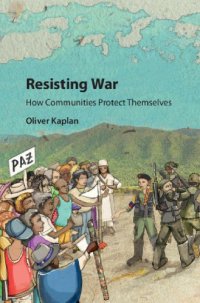
Ebook: Resisting war how communities protect themselves
Author: Kaplan Oliver Ross
- Tags: Civil war--Protection of civilians, Civil war--Protection of civilians--Colombia, Civil war, Protection of civilians, Colombia, Civilians in war, Civilians in war--Colombia, Colombia, History 1946-1974, History 1974-, Community organization, Community organization--Colombia, Nonviolence, Nonviolence--Colombia, History, Nonviolence -- Colombia, Civil war -- Protection of civilians -- Colombia, Civilians in war -- Colombia, Community organization -- Colombia, Colombia -- History -- 1946-1974, Colombia -- Histor
- Year: 2017
- City: Colombia
- Language: English
- pdf
Machine generated contents note: 1. Introduction: civilian autonomy in civil war; 2. A theory of civilian decision-making in civil war; 3. The history of conflict and local autonomy in Colombia; 4. Living to tell about it: how to study communities in conflict settings; 5. How civilian organizations affect civil war violence; 6. Why some communities are more organized than others; 7. The institution of the ATCC: how local justice procedures protect civilians in civil war; 8. Discovering civilian autonomy in Cundinamarca; 9. Civilian autonomy around the world; 10. Conclusions and policy implications;In civil conflicts around the world, unarmed civilians take enormous risks to protect themselves and confront heavily armed combatants. This is not just counterintuitive - it is extraordinary. In this book, Oliver Kaplan explores cases from Colombia, with extensions to Afghanistan, Pakistan, Syria, and the Philippines, to show how and why civilians influence armed actors and limit violence. Based on fieldwork and statistical analysis, the book explains how local social organization and cohesion enable both covert and overt nonviolent strategies, including avoidance, cultures of peace, dispute resolution, deception, protest, and negotiation. These 'autonomy' strategies help civilians retain their agency and avoid becoming helpless victims by limiting the inroads of armed groups
Download the book Resisting war how communities protect themselves for free or read online
Continue reading on any device:

Last viewed books
Related books
{related-news}
Comments (0)